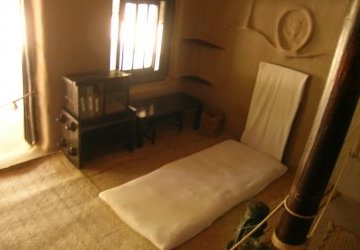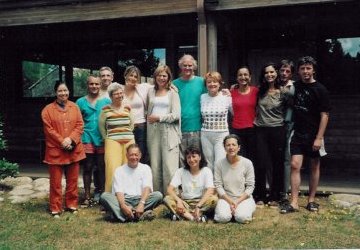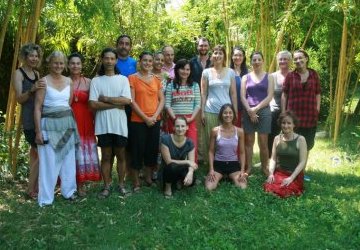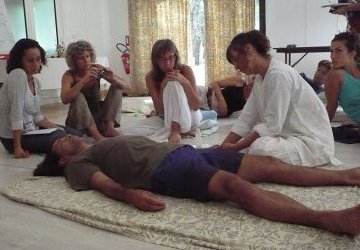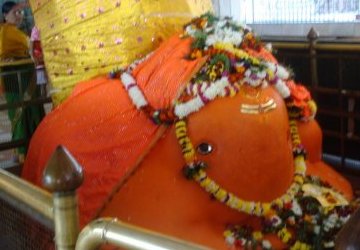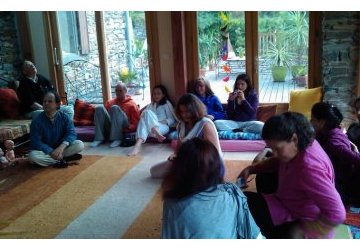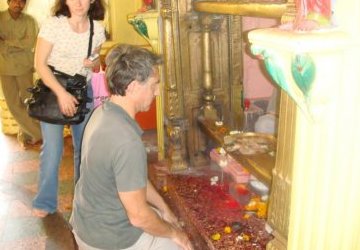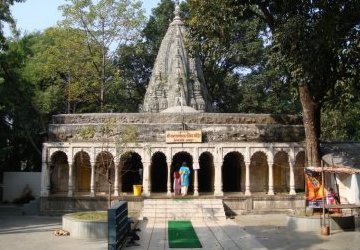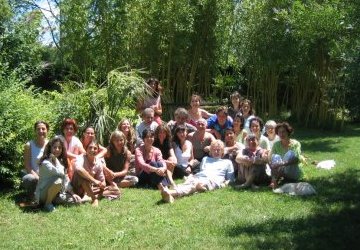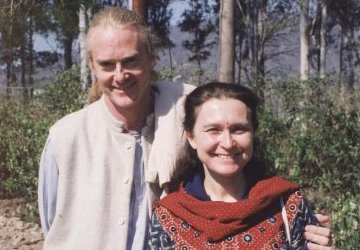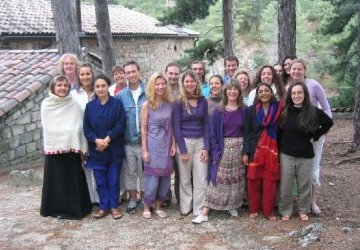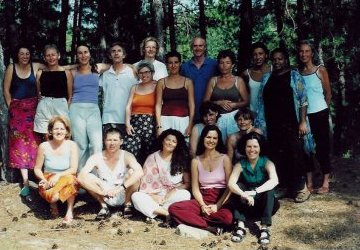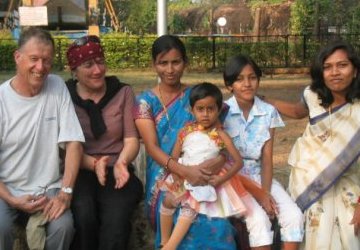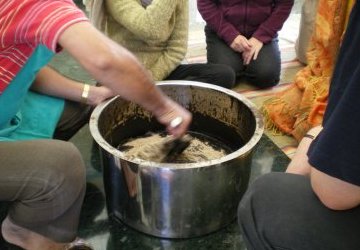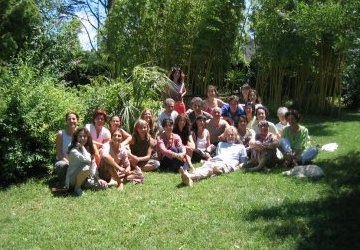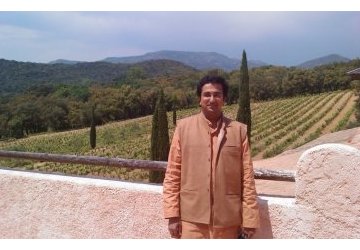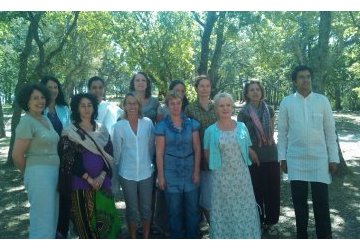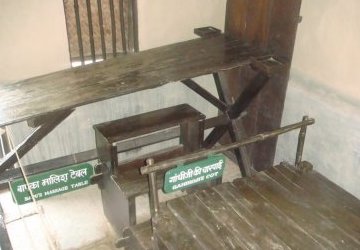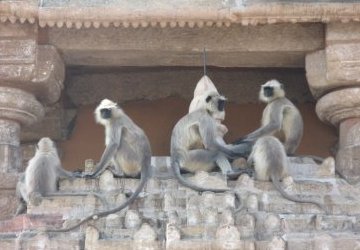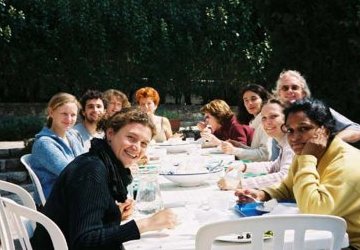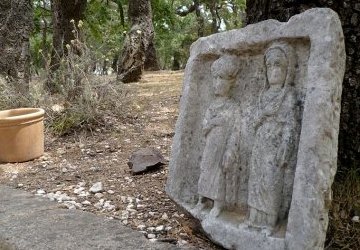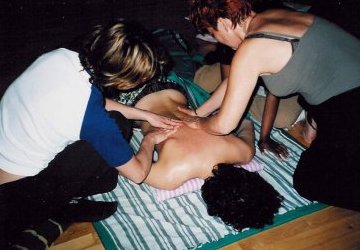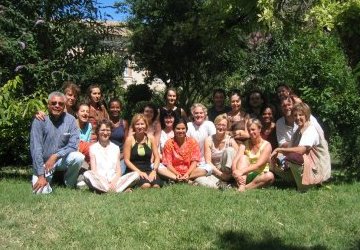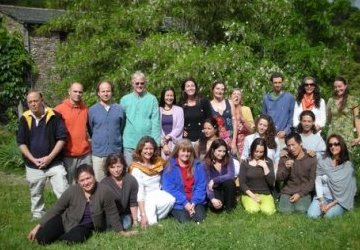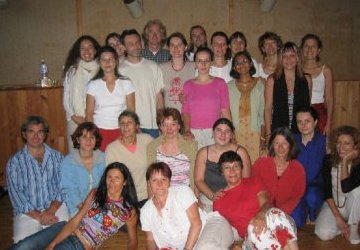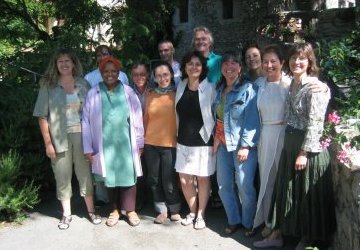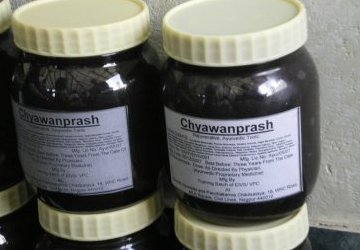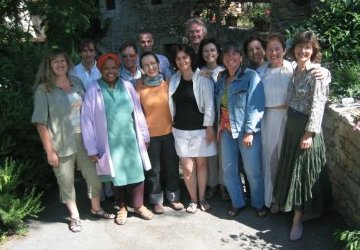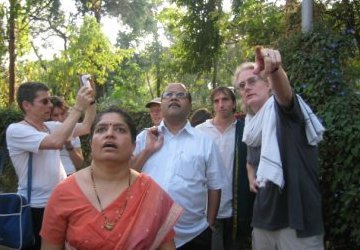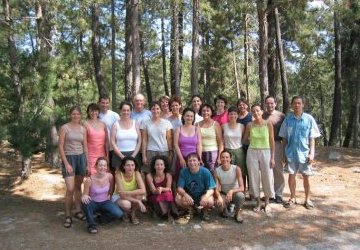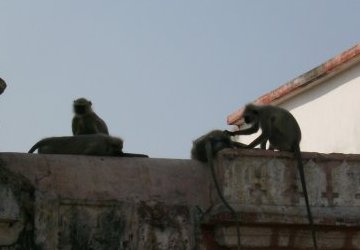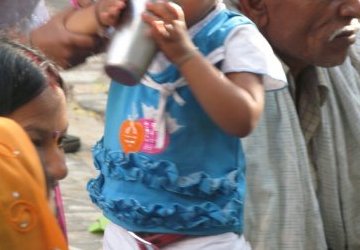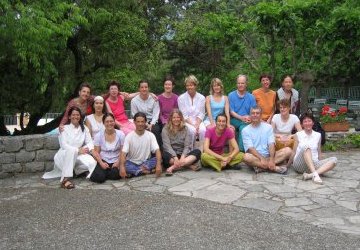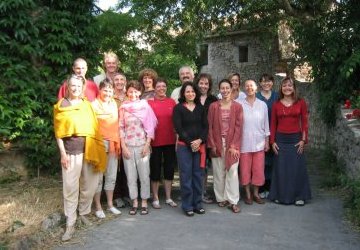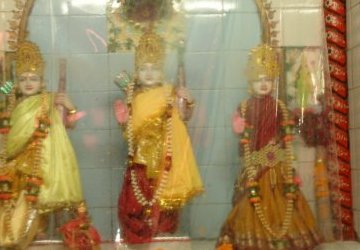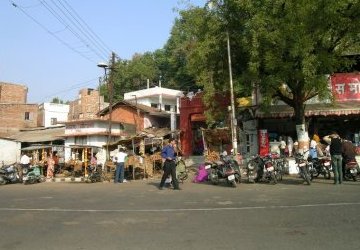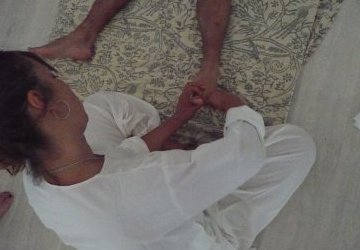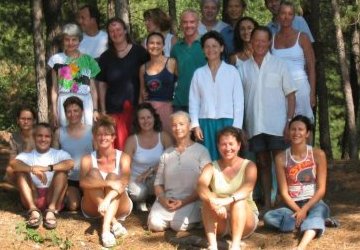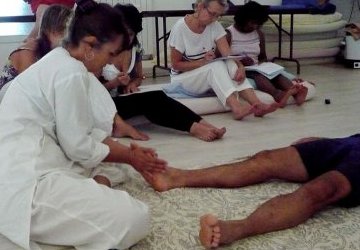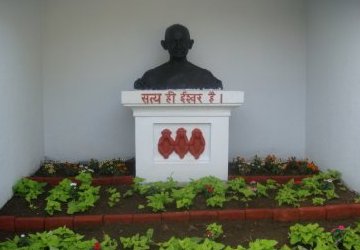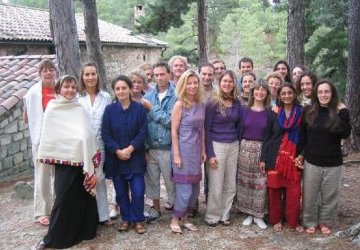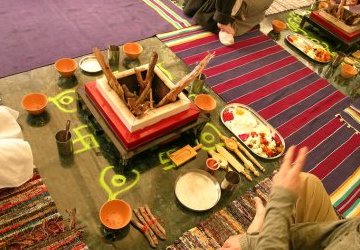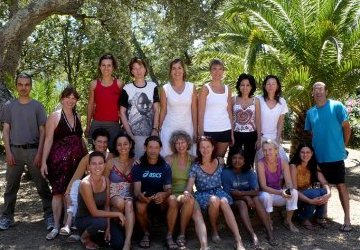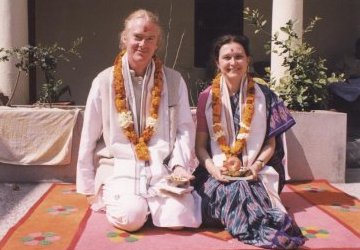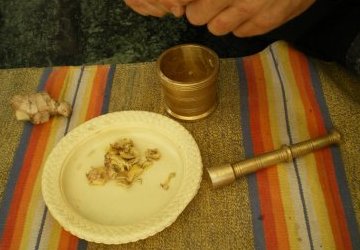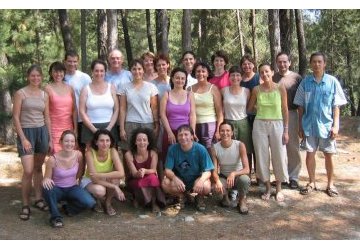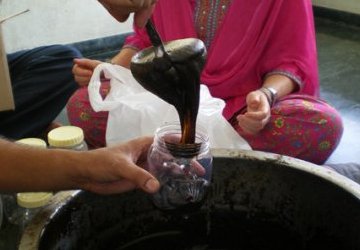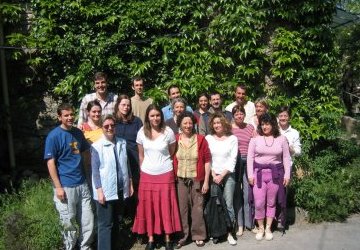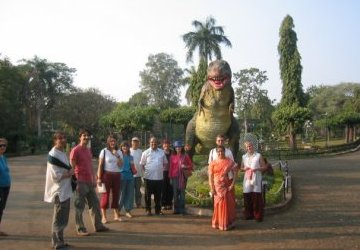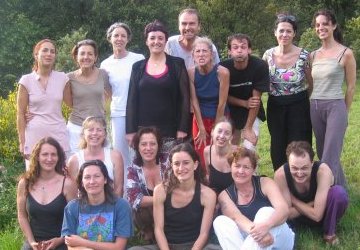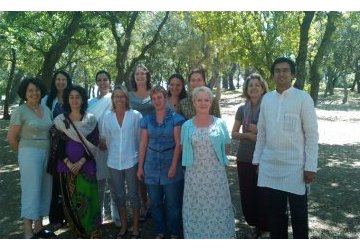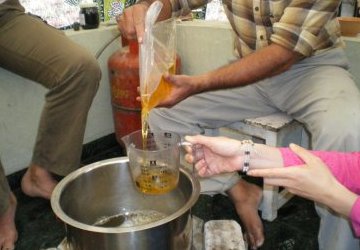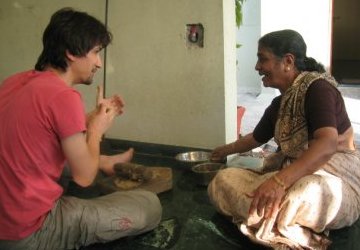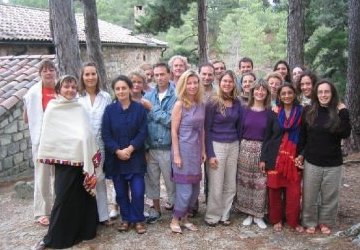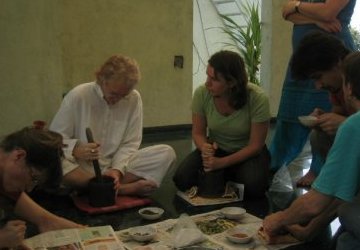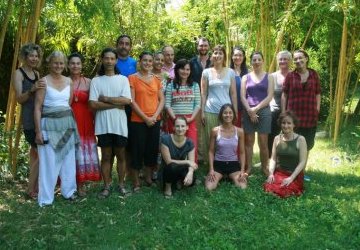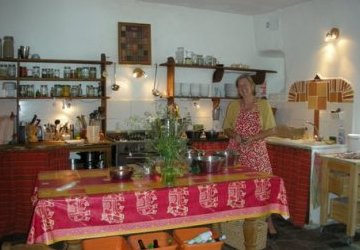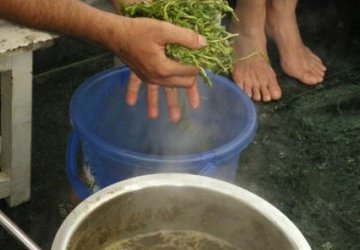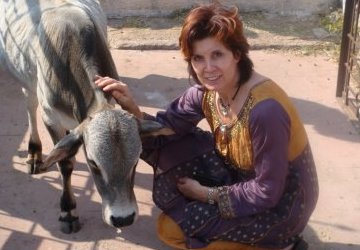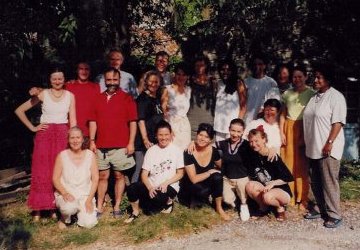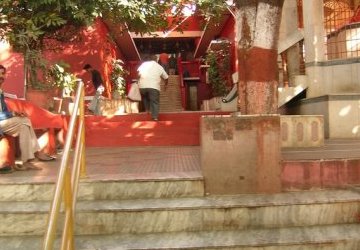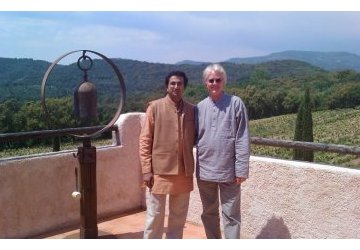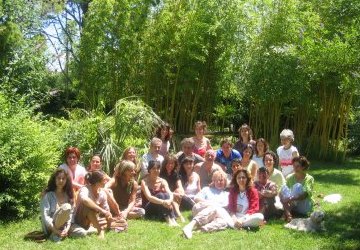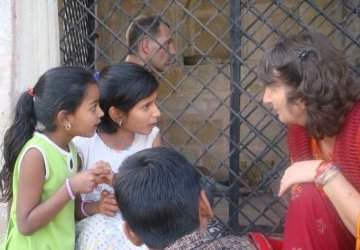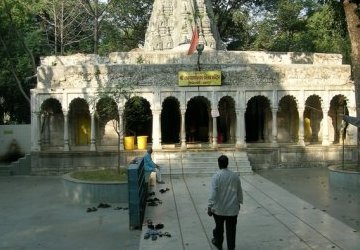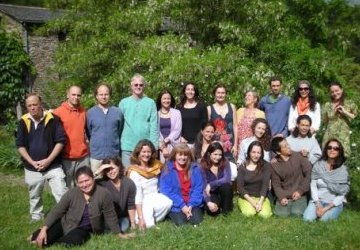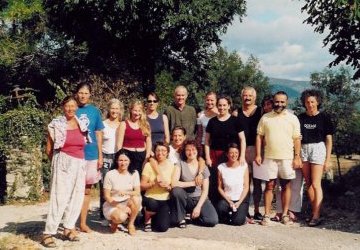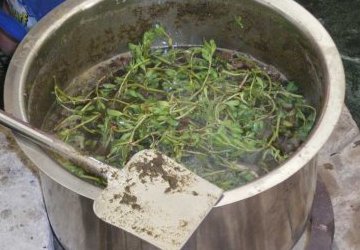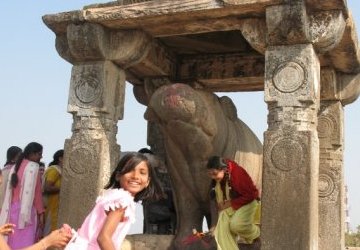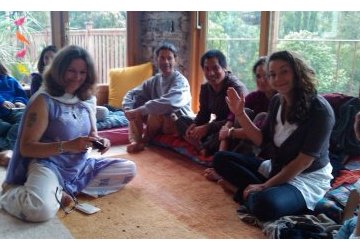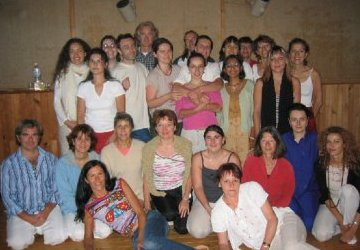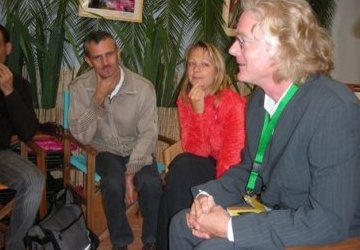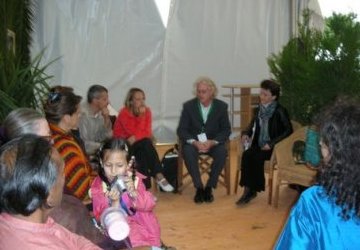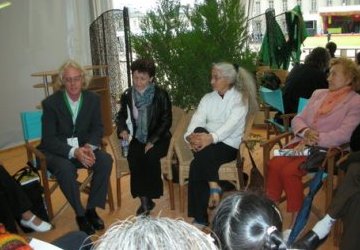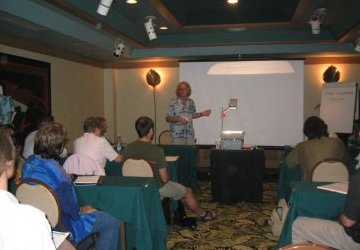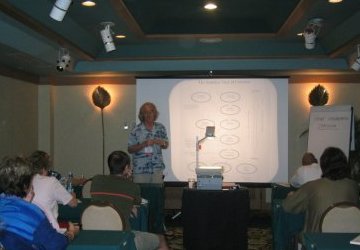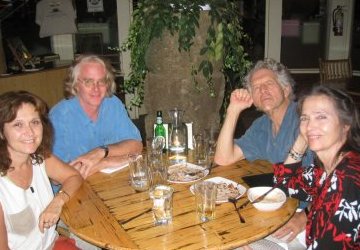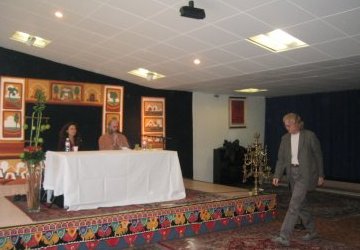Vitalizing Herbs - Jivaniya
As mentioned in the Mahakashaya of Caraka Samhita
The herbs listed in the group Jivaniya are those herbs that have life promoting actions. The major aspect that sustains life is prana; the essence of oxygen that revitalises the body’s energy and feeds the mind. The tissues of the body are sustained by oxygen the gross aspect of prana, but at the level of the cell it is prana that nourishes the cellular intelligence that maintains cellular function. When there is no prana or a stagnation of prana disease or death occurs. On a physical level it is perceived as the need to keep the tissues oxygenated via the respiratory and circulatory systems, both functioning to provide the basics of life. Prana is not only ingested via the breath but it is also taken in via the ingestion of food. Hence to sustain life one must maintain the function of breath that takes in prana, the circulation that transports prana and the digestive tract that absorbs prana as part of the digestive function.
The doshas must also be balanced as the doshas according to Caraka are the ultimate cause of death, as it is the doshas having been aggravated that gives rise to decay of the tissues. To promote the longevity of the tissues the properties of kapha that are nourishing and strengthening are utilized to counter the catabolic effect of vata. The effect of the herbs in the group Jivaniya are anabolic in their nature, having the quality of kapha, hence they are building, nourishing and strengthening to the tissues.
In order to strengthen the tissues of the body one must first sustain rasa dhatu, the first tissue in the body that nourishes all other tissue establishing tissue strength and proper tissue formation. Rasa dhatu has similar qualities to kapha and as such agents that increase kapha in the body nourish and strengthen rasa dhatu. By strengthen and promoting strong rasa dhatu the other tissues that are nourished by rasa will also be strengthened. To maintain complete strength in the body one need to nourish immunity so that it is strong enough to withstand the barrage of stress and pathogens that attacks our bodies during our life. Ojas the medium for immunity is a byproduct of shukra dhatu � the reproductive system present in male and females. As ojas is the superior byproduct of shukra any agent that feeds and maintains shukra will also affect immunity, hence aphrodisiacs that act to nourish and support reproductive tissue formation also act to build immunity. Ojas is also the subtle aspect of kapha, the function behind protecting the tissues.
The common feature of the herbs listed in Jivaniya is their kapha promoting action, nutritive qualities and shukra increasing effect upon the body. A number of these herbs are also effective haemostatic’s and have expectorant actions thus supporting the functions of the lungs and stopping loss of blood that would normally rob tissues of vital prana, the supporter of life.
Jivaniya in Caraka Samhita
The herbs listed under the therapeutic groups of herbs known as Jivaniya in Caraka Samhita are:
1. Jivaka
Latin Name / Common name: Microstylis wallichi Lindl. [1] or Microstylis spp [2]
2. Rasabhaka
Latin Name / Common name: Microstylis muscifera Ridley [1] or Microstylis wallichi [2]
3. Meda
Latin Name / Common name: Polygonatum verticillatum All [1]/ Moench [2]
4. Mahameda
Latin Name / Common name: Polygonatum verticillatum Allioni [1] / Moench [2]
5. Kakoli
Latin Name / Common name: Roscoea procera Wall [1] or Fritellaria oxypetala Royle [2]
6. Ksirakakoli
Latin Name / Common name: Roscoea procera Wall [1] or Lillium polyphllum [2]
7. Mudgaparni
Latin Name / Common name: Phaseolus trilobus / Wild bean
Rasa: Madhura, Tikta
Guna: Laghu, Ruksha
Virya: Shita
Vipaka: Madhura
Doshic Action: Tridoshic - Mainly Vata Pitta pacifying
The traditional application of the drug was used as a stomachic, vitaliser, carminative, hemostatic, antipyretic and aphrodisiac[3]. Its vitalising or life promoting action are many faceted, as a carminative and stomachic it pacifies doshas in the GI tract correcting digestive problems that lead to the formation of improper nutrients and toxins that feed the tissues. Mudgaparni’s initial action is important for the formation of the first tissue rasa that sustains the other tissues. As a hemostatic it checks hemorrhaging thus prolongs life in individuals that are suffering from internal bleeding whilst building their strength with its nutritive action. Its action as an antipyretic indicates its effect on rasa dhatu; it is cooling and nourishing building quality rasa that sustains life. As an aphrodisiac it is used primly in male infertility where its nutritive action permeates to the level of shukra dhatu building and nourishing sperm. As it builds shukra it also sustains Ojas the by product of shukra thus strengthening immunity.
Mudgaparni is also listed under the group Shukra-janana � spermogenic herbs in the Mahakashaya of Caraka.
8. Masaparni
Latin Name / Common name: Teramnus labialis [3] or Phaseolus mungo [4]
Rasa: Madhura, Tikta
Guna: Laghu, Snigdha
Virya: Shita
Vipaka: Madhura
Doshic Action: Vata Pitta pacifying - Kapha aggravating
Traditionally this herb is considered as an aphrodisiac and as a Rasayana - rejuvenating agent. It is an ingredient in numerous preparations including Chyavanaprasha and Brahma Rasayana. Masaparni’s actions are pacifying to the catabolic nature of vata and promote kapha that nourishes and sustains the tissues. It is seen to nourish the GI tract, maintaining kledaka kapha in the form of the mucosa lining enabling proper formation and movement of food in the GI tract. The herb is an antipyretic by it cooling sweet properties hence it maintains correct quality of rasa dhatu which then feeds rakta acting as a blood purifier by this very nature. Its kapha increasing action promotes the actions of the subdoshas of kapha, like Sleshaka kapha that nourishes and lubricates the joints, hence it is used to treat and relieve the symptoms of osteoarthritis and gout. Masaparni is a Prajasthapana - promoting fertility and holding conception agent and it combined with Bala - Sida cordifolia, for this very action in the preparations Bala Ghrita and Bala Tailam.
Masaparni’s kapha increasing action nourishes rasa dhatu thus promoting strength and good quality formation of the remaining tissues. Its affinity towards promoting the formation and strengthening Shukra dhatu establishes ojas thus aiding in immunity. It is often combined with Mudgaparni - Phaseolus trilobus.
Masaparni is also listed under the group Shukra-janana - spermogenic herbs in the Mahakashaya of Caraka.
9. Jivanti
Latin Name / Common name: Leptadenia reticulate
Rasa: Madhura
Guna: Laghu, Snigdha
Virya: Shita
Vipaka: Madhura
Doshic Action: Vata Pitta pacifying - Tridoshic
Jivanti is a nutritive herb that promotes the strengthening and formation of tissues. It is smoothening to the GI tract and can be used in the treatment of constipation and colitis. It is an expectorant in disorders of the respiratory tract caused by vata and pitta producing inflammation and stagnation as in bronchitis. Jivanti is considered a heart tonic and is used to treat eye conditions.
Jivanti like many of the herbs listed in this group is pacifying to vata and pitta and promotes the nutritive properties of kapha. It like the herbs mentioned before it has an affinity with shukra dhatu promoting and strengthening sperm formation. Thus it promotes strong Ojas establishing immune function. Its action on the respiratory system helps to maintain the proper function of the lungs enabling the uptake of vital prana across the wall of the alveoli supporting the flow of prana in the body.
10. Madhuka / Yashtimadhu
Latin Name / Common name: Glycyrrhiza glabra Linn / Liquorice
Rasa: Madhura
Guna: Guru, Snigdha
Virya: Shita
Vipaka: Madhura
Doshic Action: Vata Pitta pacifying
Yashtimadhu is an excellent herb having many actions and as such it is listed in six of the Mahakashaya in Caraka Samhita. It is a Rasayana herb and is used extensively in Ayurvedic treatments. Today it forms part of many preparations not only for its therapeutic effect but due to its sweet taste that helps mask some of the tastes of other less palatable herbs.
Yashtimadhu’s action are seen across the whole body, however it has strong affinity for the pranvaha srota - respirtory tract where it acts as an expectorant and is used in the treatment of asthma and cough. Thus it supports the exchange of gases across the alveoli in the lungs allowing the subtle essence of oxygen, prana to enter its major path in the body.
Yashtimadhu also promotes and strengthens the formation the sperm hence as stated in other herbs that have the same action, is strengthening to ojas - immunity. Its numerous actions in the body helps maintain the functions of life hence it is also listed as a Jivaniya herb.
Yashtimadhu is listed in Kanthya - beneficial for the throat, Varnya - complexion promoting, Kandughna - anti-pruritic, Mutra virajaniya - gives colour to the urine and Sonita sthapana - stopping bleeding therapeutic groups of the Mahakashaya of Caraka.
Substitute
The first six herbs listed in Jivaniya are listed in a group of herbs known as Ashtvarga - eight herbs. These eight herbs become extinct 500 years ago and as such other herbs were suggested to use in place of these herbs.
Bhavamisra the author of Bhavaprakasa Nighantu proposed that the following herbs be used instead of the extinct herb:
| Herbs | Substitued with |
|---|---|
| Meda and Mahameda | Shatavari (Asparagus racemosus) |
| Jivaka and Rasabhaka | Vidari (Pueraria tuberose) |
| Kakoli and Ksirakakoli | Ashvagandha (Withania somnifera) |
Others suggest the following can be used in place of the mentioned herbs:
| Herbs | Substitued with |
|---|---|
| Jivaka | Guduchi (Tinospora cordifolia) or Centaurea behen |
| Rasabhaka | Orchis spp. which includes Munjataka (Orchis latifolia Linn), Vamsha Rochana (Bambusa arundinaceae), or Salvia haematode |
| Meda | Orchis mascula |
| Mahameda | Gandhaprasarani (Paederia foetida), Musali (Sveta Musali) (Asparagus adscendens) |
| Kakoli | Talamuli (Krishna Musali) (Curculigo orchioides) |
| Ksirakakoli | Chlorophytum arundinaceum |
Researches into the identities of the listed plants have been carried out in the Himalayas where it is believed the plants originated from. From this research botanical reference has been established although discrepancies exist regarding the botanical identity. Listed at the beginning of the paper are the botanical names that have been indicated for the original plants.
The information listed above regarding the Ashtvarga group of herbs and the herbal substitutes is sourced from the book by H.S Puri titled; Rasayana - Ayurvedic Herbs for Longevity and Rejuvenation.
The energetic properties of the suggested substitutes are as follows.
Shatavari - Substituted for Meda and Mahameda
Latin Name / Common name: Asparagus racemosa
Rasa: Madhura, Tikta
Guna: Guru, Snigdha
Virya: Shita
Vipaka: Madhura
Doshic Action: Vata Pitta pacifying
In clinical testing it was shown to have anti-tumor, immunomodulator and galactagogue properties and produced results in treating male infertility, duodenal ulcers and nausea and vomiting [2].
Vidari - Substituted for Jivaka and Rasabhaka
Latin Name / Common name: Pueraria tuberose
Rasa: Madhura
Guna: Guru, Snigdha
Virya: Shita
Vipaka: Madhura
Doshic Action: Vata Pitta pacifying
In clinical testing it was shown to have anti-inflammatory, anti-spasmodic, hepatoprotective, antioxidant properties and produced results in treating heart disorders, nervous disorders and gynaecological problems [2].
Ashvagandha - Substituted for Kakoli and Ksirakakoli
Latin Name / Common name: Withania somnifera
Rasa: Madhura, Kashaya, Tikta
Guna: Laghu, Snigdha
Virya: Ushna
Vipaka: Madhura
Doshic Action: Vata Pitta pacifying
In clinical testing it was shown to have psychotropic, anabolic, immunomodulator, anticancerous, anti-stress, anti-ulcerogenic, adaptogen, ant-inflammatory, antioxidant properties and produced results in treating cervical spondylosis, disorders of old age, liver disease, skin problems and as an adjuvant to cancer therapy [2].
Guduchi - Substituted for Jivaka
Latin Name / Common name: Tinospora cordifolia / Heart-leaved, Moonseed
Rasa: Tikta, Kashaya
Guna: Guru, Snigdha
Virya: Ushna
Vipaka: Madhura
Doshic Action: Tridoshic
In clinical testing it was shown to have anti-inflammatory, anti-ulcerogenic, hepatoprotective, anticancerous, immunomodulator, hypoglycaemic, anti-stress, anti-allergic, diuretic, and anti-microbial properties [2].
Munjataka - Substituted for Rasabhaka
Latin Name / Common name: Orchis latifolia Linn / Salep
Rasa: Madhura
Guna: Guru, Snigdha
Virya: Shita
Vipaka: Madhura
Doshic Action: Vata Pitta pacifying
Traditionally used as an aphrodisiac it was shown to stimulate sexual behaviour and improve sexual function of male rats in clinical studies [2].
Vamsha Rochana - Substituted for Rasabhaka
Latin Name / Common name: Bambusa arundinaceae
Rasa: Madhura, Kashaya
Guna: Laghu, Ruksha, Tikshna, Snigdha
Virya: Shita
Vipaka: Madhura
Doshic Action: Vata Pitta pacifying
Gandhaprasarani - Substituted for Mahameda
Latin Name / Common name: Paederia foetida
Rasa: Tikta
Guna: Guru, Sara
Virya: Ushna
Vipaka: Katu
Doshic Action: Kapha Vata pacifying
Musali / Sveta Musali (White) - Substituted for Mahameda
Latin Name / Common name: Asparagus adscendens
Rasa: Madhura
Guna: Guru, Snigdha
Virya: Shita
Vipaka: Madhura
Doshic Action: Vata Pitta pacifying - Kapha aggravating
Talamuli / Krishna Musali (Black) - Substituted for Kakoli
Latin Name / Common name: Curculigo orchioides
Rasa: Madhura, Tikta
Guna: Guru, Snigdha, Picchila
Virya: Ushna
Vipaka: Madhura
Doshic Action: Vata Pitta pacifying - Kapha aggravating
Found to have an inhibitory effect on hepatitis B replication and have anti-inflammatory and hepatoprotective properties in clinical studies [2].
References:
[1] Sharma, Prof. P.V. Caraka Samhita (Text with English translation), Jaikrishnadas Ayurveda Series. Varanasi India: Chaukhambha Orientalia, 2000
[2] Puri, H.S. Traditional Herbal Medicine for Modern Times, Rasayana - Ayurvedic Herbs for Longevity and Rejuvenation. Taylor & Francis, London. 2003
[3] Pandey, Dr. Gyanendra. Dravyaguna Vijnana. Varanasi India. Krishnadas Academy, Second edition 2002
[4] Gogte. Vaidya V. M., Ayurvedic Pharmacology and Therapeutic Uses of Medicinal Plants- Dravyagunavignyan. English Translation. Bharatiya Vidya Bhavan, Mumbai. 2000
[5] Lad, Dr. Vasant. Frawley, Dr. David., Yoga of Herbs. Wisconsin USA. Lotus Press 1986 Second edition 1988.
© Brenden Skudder 2004


